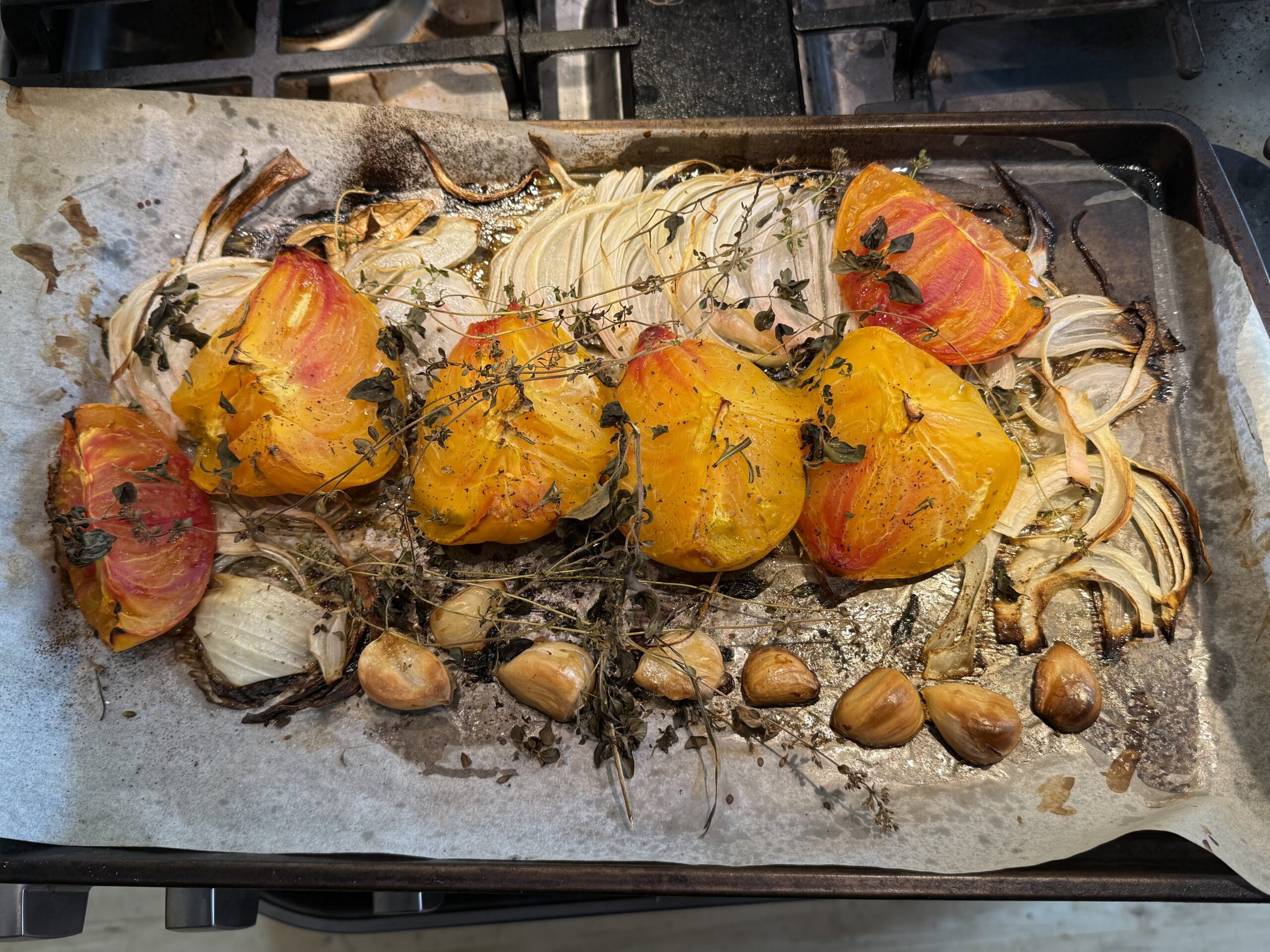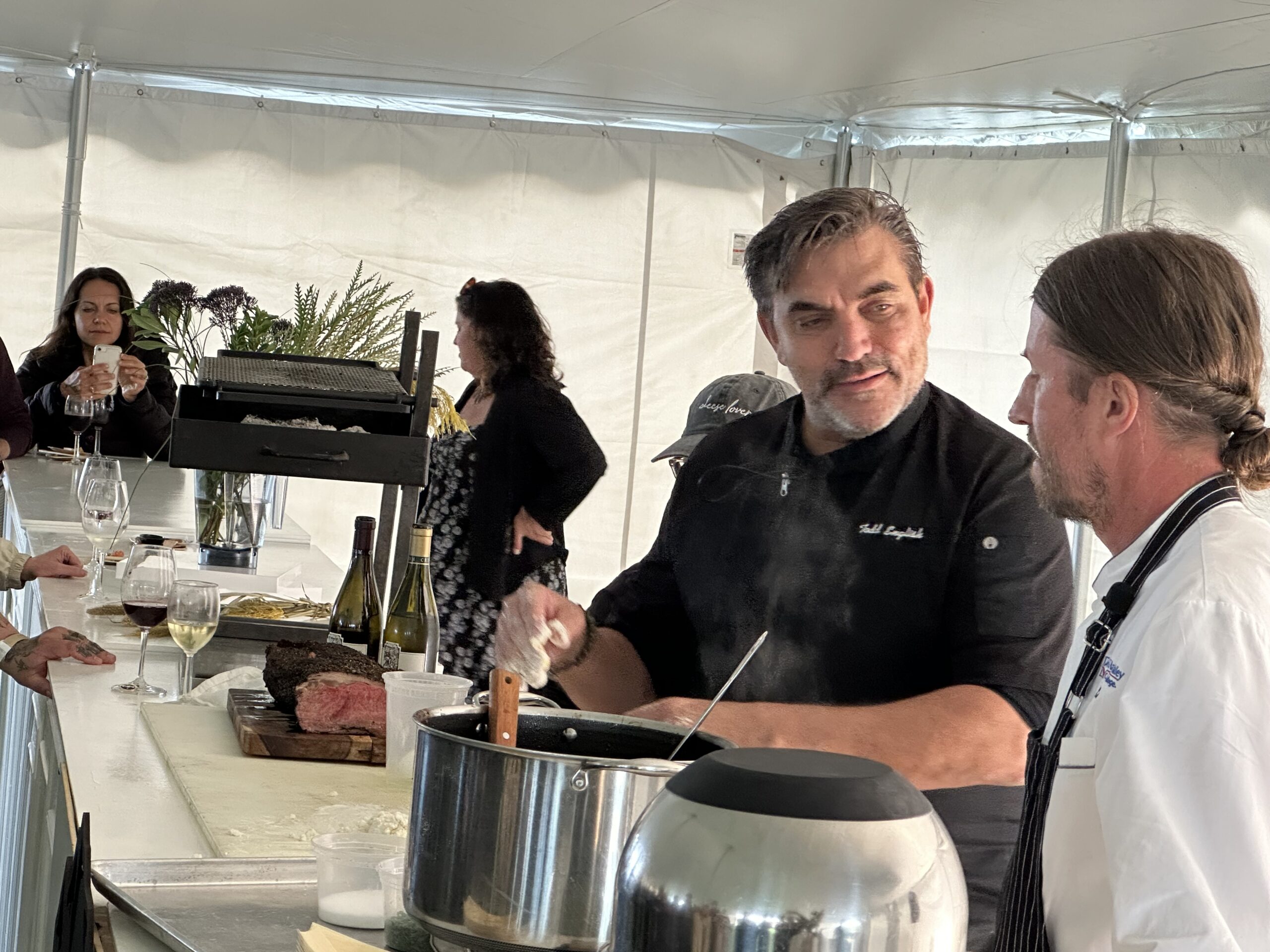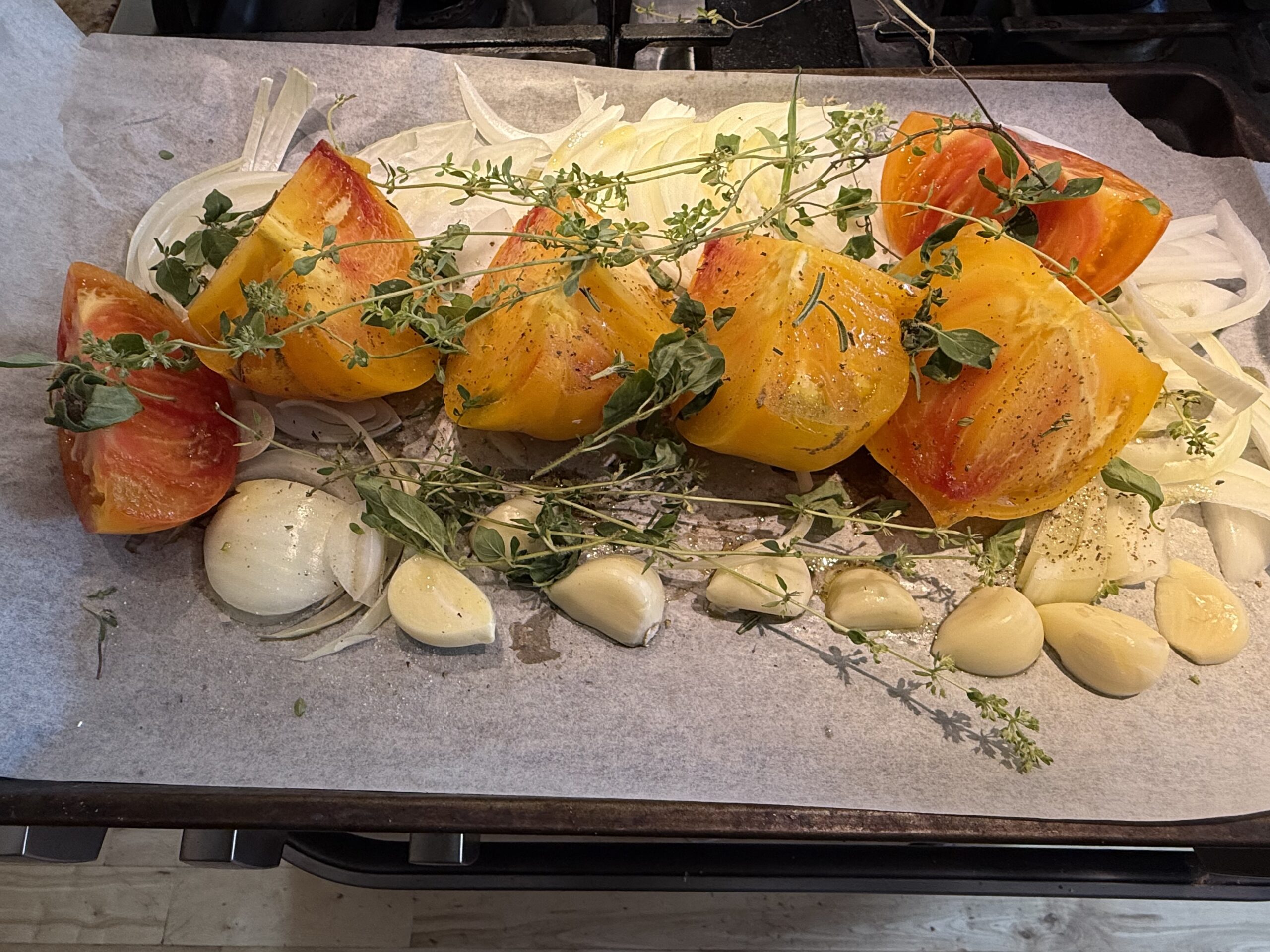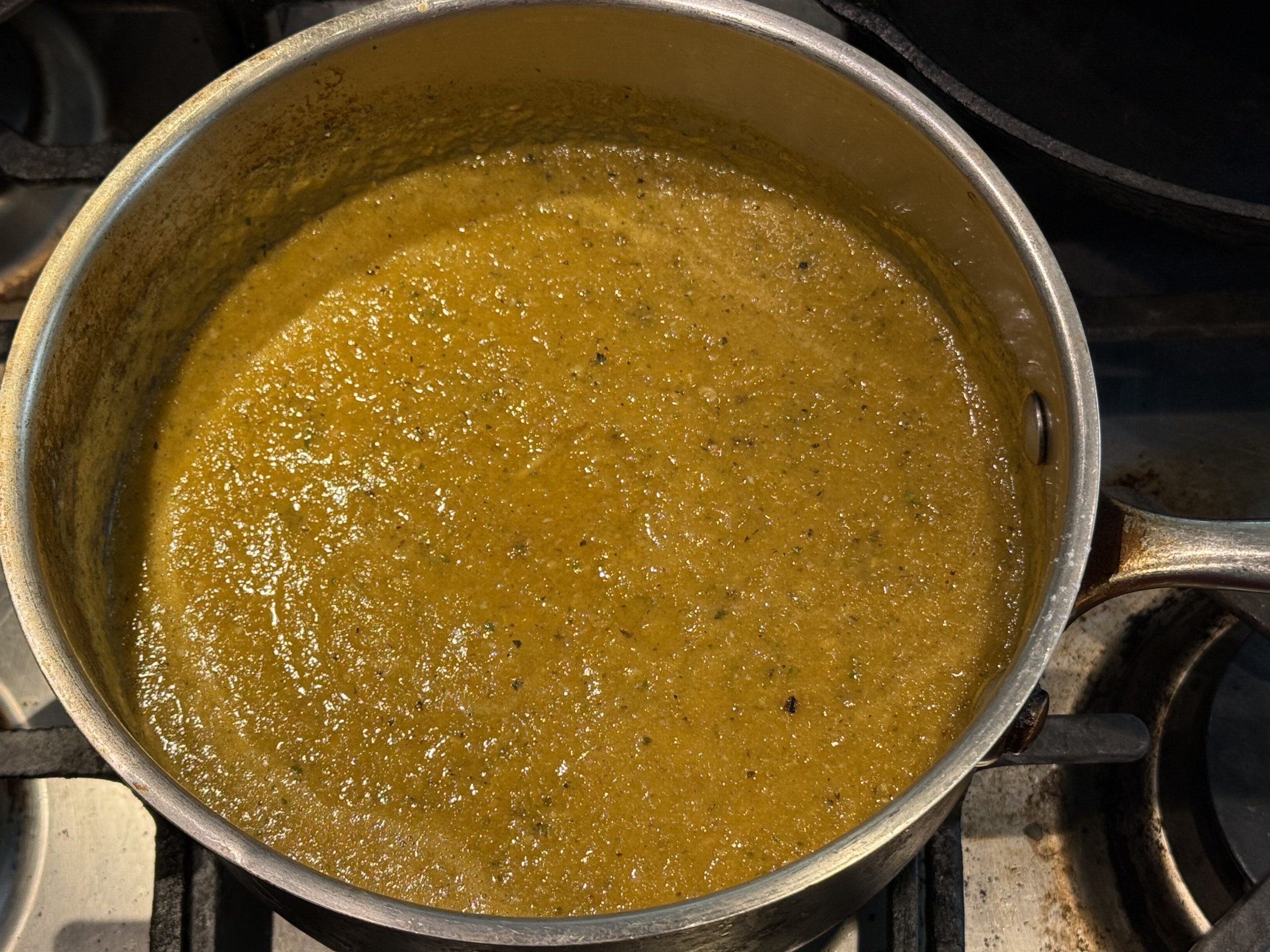
Talkin’ Tomatoes with the Toddfather
This is a fun time of the year to be Chef Todd English. Which, chances are, you aren’t, but you can still enjoy this sunny moment, the cusp where summer meets autumn, in the same ways the four-time James Beard Award winning chef, restaurateur and cookbook author does. For one, we can finally eat tomatoes, as well as cook, dream, gush, and best of all not frown upon them.
For English, even after decades of immersion in the tomato lifestyle, the magic that began in his grandmother’s kitchen still hasn’t faded. “It’s one of the most beautiful fruits. And it’s a vegetable. It’s savory and it’s sweet. It goes with aioli, mayonnaise and other sauces, and pairs with so many foods,” says English, who refuses to serve tomatoes out of season due to his, “loyalty to their perfection.” The names of his restaurants, like Olive and Fig, betray his fiercely ingredient-forward approach to cooking, which is less about fancy footwork and more about expressing the inner beauty of his raw materials.
These days, English and his chefs have been plunging deep down the fresh tomato rabbit hole, cranking out jam, leather, gazpacho, soup (aside the occasional grilled cheese sandwich), smoked heirloom sauce, yellow tomato Bloody Marys, and many variations on the Chef’s all-time favorite tomato pairing: with blue cheese. He mentioned a particular heirloom tomato sandwich with whipped gorgonzola as being the absolute pinnacle, but emphasized that any blue cheese, in any context, should work.
“Gorgonzola, Roquefort, Stilton, Maytag. It doesn’t matter. Blue cheese and tomato is one of the greatest things in the world to eat.”
I told him a story about a farmer friend who, at the end of market, offered me as many heirloom tomatoes as I wanted. These soft, cracked, thin-skinned balloons of tomato juice were too ripe to store until the Tuesday market, and even too cumbersome for the food bank people. Thus, they were destined for compost. Through the phone waves I could feel the chef nodding gravely at the tragedy.
“Heirloom tomato sauce freezes really well,” he offered. I was equal parts surprised to hear it and kicking myself for not having already tried it. English promised me a recipe, which I will pass along to you at the end of this column. I ended up making several quarts of it, after bringing home about 15 pounds of free yellow and red heirlooms.
Years before launching his storied 45 year career in the restaurant industry, young Todd would peel and can tomatoes with his grandma. Today, his professional focus has arced away from opening restaurants and more toward the impact of diet on longevity. He has served in advisory roles in several initiatives and educational programs that aim to understand and communicate about Blue Zones, which are places on the planet where people seem to live longest.
Specializing in Mediterranean cuisine has made English an instant authority on olive oil based eating. And while fat choice is a crucial dietary consideration, Blue Zones are about lifestyle as much as diet, he says, about the company around the table as much as what’s on the table. And, ideally, about the work that went into putting the food there.
“The Blue Zone lifestyle includes eating food in season. Naturally. Unprocessed. Rich olive olive oil or high omega 3 fatty acids. It’s about community. Enjoying each other. How you help each other out. That’s what is keeping the centennials out working in the fields.”
The more he discussed the Blue Zone lifestyle, the more I thought about his attitude toward the tomato, and the respect for the tomato lifestyle he learned from his grandmother. It’s the simple things. Done humbly, with care, that keep us going.
Another reason why it’s good to be Todd English these days are the artichokes, with which like tomatoes he refuses to deal out of season. “I used to go to an artichoke festival in Campania,” he recalled. “They would build a bonfire 10 feet long, 3 feet wide, and and pour olive oil, garlic, and nepitella — an extra fragrant, oregano-like mint — over the artichokes and then bury them in the coals below spits of roasting lamb.” As the lambs cooked, their drippings would soak into the artichokes below. When the coals died they would dig up what was left of the artichokes, cut off the blackened parts, and serve the lamb-fattened hearts with olive oil, lemon juice and meat.
If that doesn’t make you live 100 years, I don’t know what will.
****optional blurb for the Whitefish Food and Wine Festival****
Speaking of buried artichokes, September is when Chef English comes to Montana for the Whitefish Food and Wine Festival, which he co-founded last year. With rabbits, pigs, lambs, birds, elks and a whole wagyu beef all gracing the coals, the opportunities for artichoke burying will be plentiful.
“Last year the whole event was one long highlight,” English recalled. “I loved the camaraderie of the chefs, the localness and regionality, the walk around tasting in the beautiful setting. This year the setup is going to be similar but more intimate. With a kitchen stage. The festival is growing up.”
****End of optional blurb****
Roasted Yellow Heirloom Tomato Sauce
Here is the aforepromised recipe for yellow heirloom tomato sauce. It has so much flavor, despite having so few ingredients. In other words, a Todd English recipe. If using it on pasta, you can always simply simmer the pasta in the watery sauce, and skip the boiling water.
Ingredients
• 3 lbs yellow heirloom tomatoes (halved or quartered, depending on size)
• 1 large sweet onion, sliced
• 6 cloves garlic, peeled
• 3 Tbsp extra virgin olive oil
• 1 Tbsp white balsamic vinegar (or champagne vinegar, for brightness)
• 1 tsp sea salt
• ½ tsp black pepper
• 1 tsp sugar (optional, balances acidity)
• 1 small bunch fresh basil (about ½ cup leaves, loosely packed)
• 1 sprig fresh thyme or oregano (optional)
Method
1. Preheat oven to 400°F (200°C).
2. Arrange vegetables: Spread tomatoes (cut side up), onion slices, and garlic cloves on a parchment-lined baking sheet.
3. Season: Drizzle with olive oil and vinegar. Sprinkle with salt, pepper, and sugar (if using). Scatter thyme/oregano if desired.
4. Roast: Bake 35–45 minutes until tomatoes are caramelized and slightly blistered, onions softened, and garlic golden.
5. Blend: Transfer everything to a blender or food processor. Add fresh basil and blend until smooth (or leave a little chunky if you prefer rustic texture).
6. Simmer (optional): Pour into a saucepan and simmer gently for 10–15 minutes to deepen flavors. Adjust seasoning to taste.
Finishing Touches
For a silky sauce, strain through a fine mesh sieve.
Stir in a touch of butter or olive oil before serving for extra richness.
If pairing with seafood, finish with a squeeze of lemon juice for brightness.



